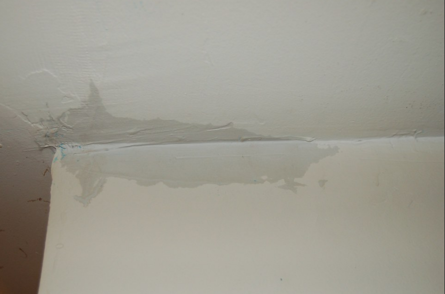Do's & Don'ts of Water Restoration.
Do's & Don'ts of Water Restoration.
Blog Article
We've stumbled on this post on Preventing Fires and Water Damage In Your Home listed below on the net and believe it made good sense to discuss it with you on this site.

Water offers life, but water invasion on some components where it's not intended to be can cause damage as well as hassle. If the water seeps into your framework, it can peel off away the surface area as well as wear down the product's foundation. Mold and mildew as well as mildew additionally thrive in a damp environment, which can be hazardous for your and your family members's health. In addition, houses with water damage odor mildewy and old.
Water can come from several sources like tropical cyclones, floods, burst pipelines, leakages, and also drain problems. If you have water damage, it's much better to have a working understanding of security precautions. Here are a couple of standards on just how to take care of water damages.
Do Prioritize Home Insurance Policy Coverage
Seasonal water damage can originate from floods, seasonal rainfalls, as well as wind. There is also an incident of an abrupt flooding, whether it originated from a damaged pipe that unexpectedly breaks right into your residence. To shield your house, obtain house insurance policy that covers both disasters such as all-natural tragedies, and emergencies like broken plumbing.
Do Not Fail To Remember to Turn Off Utilities
When calamity strikes as well as you're in a flood-prone location, switch off the primary electrical circuit. Shutting off the power stops
When water comes in as water serves as a conductor, electric shocks. Do not fail to remember to shut off the main water line shutoff as a way to avoid even more damage.
Maintain your furniture secure as they can move about and also trigger added damages if the floodwaters are obtaining high.
Do Keep Proactive and Heed Weather Alerts
If you live in a location afflicted by floods, remain positive and ready at all times. Pay attention to the information and discharge warnings if you live near a body of water like a lake, creek, or river .
Do Not Neglect the Roof
Your contractor must take care of the defective gutters or any type of other signs of damage or weakening. An evaluation will prevent water from moving down your walls and also soaking your ceiling.
Do Pay Attention to Little Leaks
A ruptured pipe does not take place in a vacuum cleaner or overnight. There are warnings that can attract your focus and show to you some weakened pipes in your home. Signs of warnings in your pipelines include gurgling paint, peeling wallpaper, water streaks, water spots, or trickling noises behind the wall surfaces. There are signs that the pipe will certainly rupture. Don't wait for an escalation if you see these signs. Repair service and also examine your plumbing repaired before it causes enormous damage to your home, funds, and an individual nightmare.
Don't Panic in Case of a Burst Pipeline
Timing is key when it comes to water damages. If a pipe bursts in your home, promptly closed off your main water shutoff to reduce off the resource and also stop more damages. Call a reputable water damage repair specialist for aid.
Water offers life, yet water invasion on some parts where it's not intended to be can result in damages as well as trouble. In addition, residences with water damages odor old as well as musty.
Seasonal water damage can come from floods, seasonal rainfalls, and wind. Indications of red flags in your pipes consist of gurgling paint, peeling off wallpaper, water streaks, water spots, or dripping noises behind the wall surfaces. If a pipeline bursts in your residence, quickly closed off your major water shutoff to cut off the source and also prevent more damage.
Some Do's & Don't When Dealing with a Water Damage
DO:
Make sure the water source has been eliminated. Contact a plumber if needed. Turn off circuit breakers supplying electricity to wet areas and unplug any electronics that are on wet carpet or surfaces Remove small furniture items Remove as much excess water as possible by mopping or blotting; Use WHITE towels to blot wet carpeting Wipe water from wooden furniture after removing anything on it Remove and prop up wet upholstery cushions for even drying (check for any bleeding) Pin up curtains or furniture skirts if needed Place aluminum foil, saucers or wood blocks between furniture legs and wet carpet Turn on air conditioning for maximum drying in winter and open windows in the summer Open any drawers and cabinets affected for complete drying but do not force them open Remove any valuable art objects or paintings to a safe, dry place Open any suitcases or luggage that may have been affected to dry, preferably in sunlight Hang any fur or leather goods to dry at room temperature Punch small holes in sagging ceilings to relieve trapped water (don't forget to place pans beneath!); however, if the ceiling is sagging extremely low, stay out of the room and we'll take care of it DO NOT:
Leave wet fabrics in place; dry them as soon as possible Leave books, magazines or any other colored items on wet carpets or floor Use your household vacuum to remove water Use TV's or other electronics/appliances while standing on wet carpets or floors; especially not on wet concrete floors Turn on ceiling fixtures if the ceiling is wet Turn your heat up, unless instructed otherwise

I was shown that report on Preventing Fires and Water Damage In Your Home through a good friend on a different blog. Are you aware of somebody else who is curious about the niche? Why not promote it. Bless you for your time. Please check up our blog back soon.
Report this page